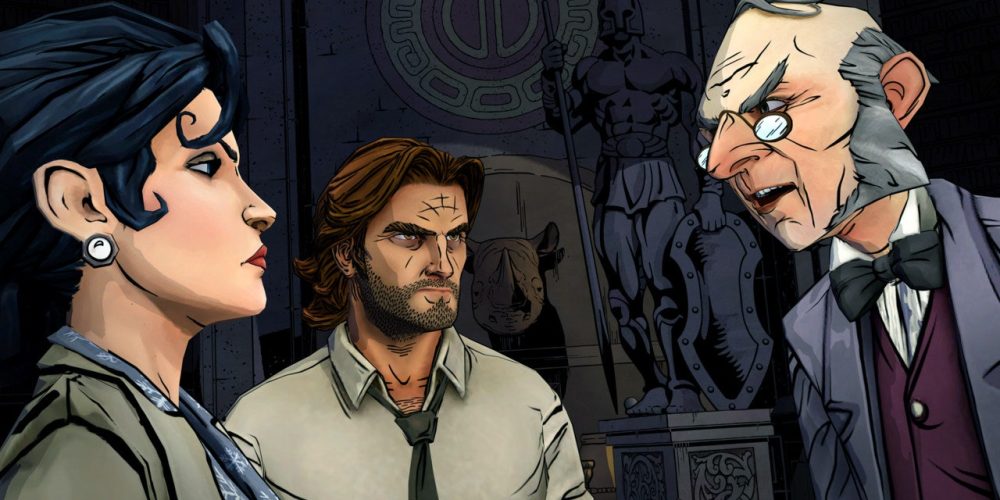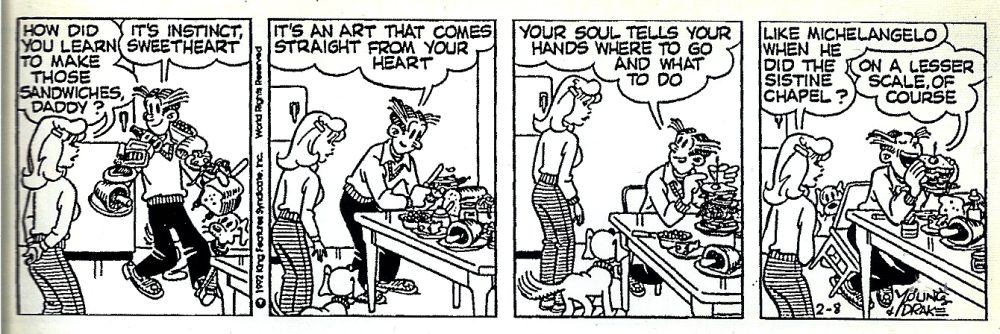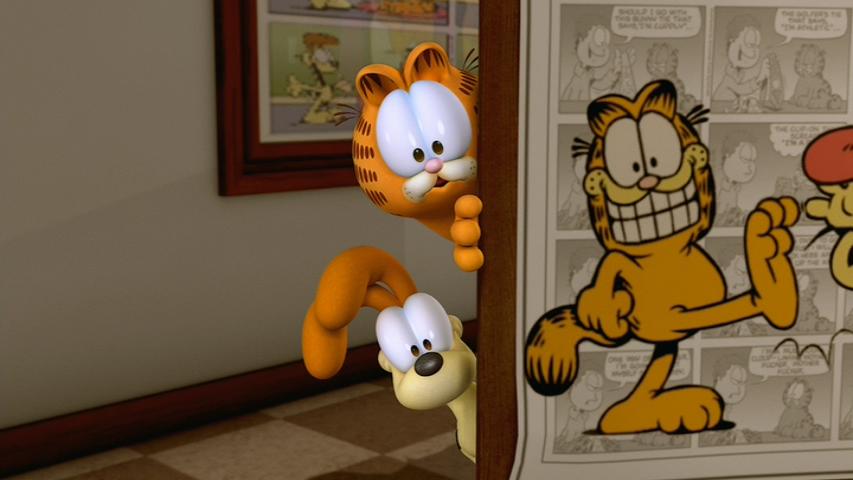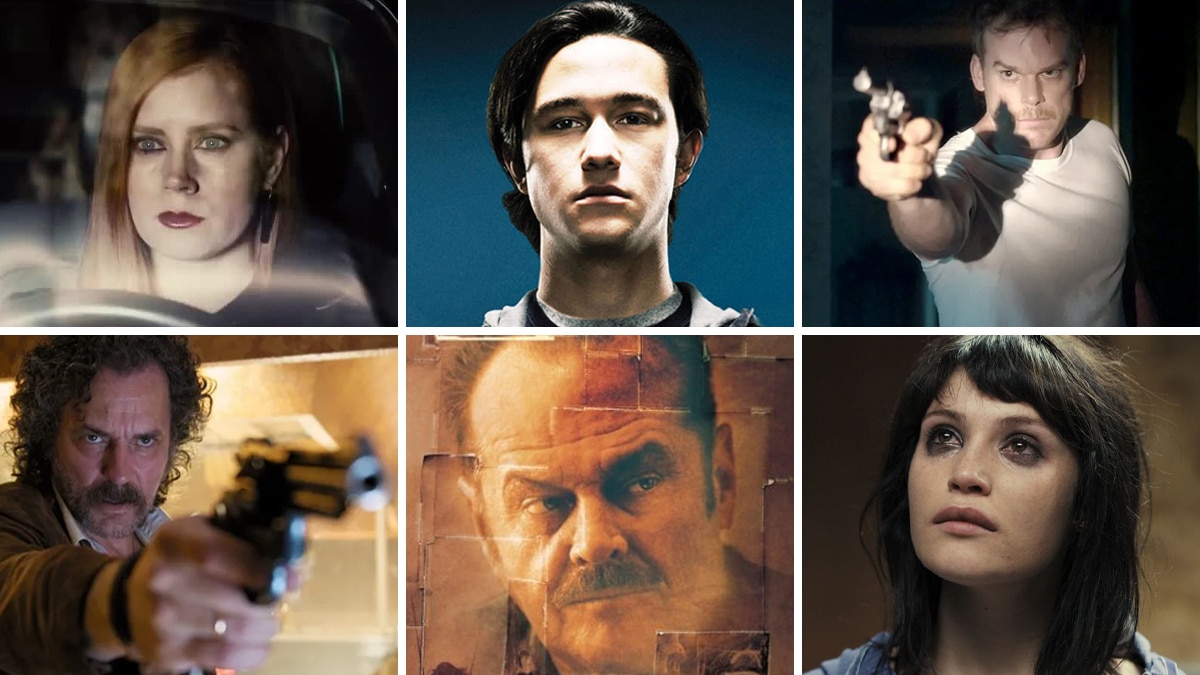The Beat’s Gregory Paul Silber has been accused of having a bit of an… obsessive personality. Each week in Silber Linings, he takes a humorous look at the weirdest, funniest, and most obscure bits of comics and pop culture that he can’t get out of his head.
Gregory Paul Silber: Welcome, friends, to this special edition of Silber Linings! I’m joined today by Comics Bookcase founder/editor-in-chief Zack Quaintance (also of The Beat!), and our friend from across the pond, Shelfdust founder/Editor-in-chief Steve Morris! Zack, you and I recently watched the 1997 Spawn film, so maybe you can explain to the readers what that has to do with what we’re doing here today?
Zack Quaintance: From my understanding, the lone connection is that these two comics-related films share the same director, and we are here to find some meaning within that…maybe?
Silber: Yup, that’s pretty much it! It also just so happens that a new animated Garfield feature film was recently announced, by way of the news that none other than Mario himself, the universally-beloved and definitely-not-increasingly-a-pariah Chris Pratt, was announced as the new voice of Garfield. Nobody will believe us, but we actually had this chat planned weeks before that news came out! Because after watching Spawn, we couldn’t wait to find out what director Mark A. Z. Dippé had in store with his trilogy of direct-to-DVD Garfield animated films written by Garfield creator Jim Davis himself. And that also meant we couldn’t do it without inviting Steve, who’s recently been commissioning a brilliant and hilarious series of Garfield essays on Shelfdust called “Field Theory”. Steve, how are you feeling about this undertaking?
Steve Morris: As a huge fan of Garfield, who I’m assured is “the orange one” in this film, I’m incredibly excited to see what that crazy legend Mark A.Z. Dippé has in store for us fans THIS time round! It’s been an emotional rollercoaster following the life of our favourite, I want to say, cat, and this film is surely going to be the Avengers Endgame/Alvin and the Chipmunks 4 of the Paws Inc Universe. I definitely understand why I am here.
Silber: I should clarify that today we’re only watching the first installment of what will surely be Davis’ magnum opus, Garfield Gets Real (2007), but perhaps if it goes well we can follow up with films two and three on Comics Bookcase and Shelfdust. Any other questions, comments, or concerns before we get started?
Quaintance: None from me. I’m ready for this, as I’ve been bracing for the commitment ever since we finished Spawn. May this be a better experience than that was…
Morris: I’m worried that the title of this film, “Garfield Gets Real”, sounds like he’s about to go on Bill Maher or release a Netflix special called “TRIGGERED??” I won’t be happy about having to cancel him, however I am poised and ready to do so the moment he starts talking about Q Theory during this children’s film.
Silber: Well this is from 2007, a simpler time when Qanon didn’t exist yet, although now I am bracing myself for the moment when Garfield comes out in favor of the Bush presidency. Anyway, let’s get started. Gotta love that Paws Inc logo to start things off!
Morris: A bee just gave a sexy wink. Why are animated bees always so horny
Silber: Something about pollination, I guess?
Morris: I’ve not checked the cast list so I don’t know who plays Garfield in this. Did Bill Murray return?
Silber: I’m assuming no, but I’ve done minimal research myself.
Quaintance: The Internet says Garfield is voiced by Frank Welker in this one. Also, I recognize no one on the cast list.
Silber: Frank Welker is somewhat famous, I think? Please don’t yell at me, Welker fans. Anyway, this just got very meta, as Jon told Garfield he’s “the star of a comic strip.”
Morris: The animated style of this film is obviously looking quite rushed and sloppy, and everyone has a porcelain-like shine to their skin, hair, teeth and clothes. There’s an element of a Telltale Games in the styling of the overall product, but if Telltale were trying to hit a seven-day turnaround time for an entire story. It’s bright, energetic, and overwhelmingly unappealing.

Quaintance: There’s a definite gaming vibe to this animation and design style. I’m reminded of the 10-second intros to games like Sim City and Sim Rollercoaster or whatever, when you get a quick video of people using the odd things you’re about to build — but for an entire film.
Silber: Yeah, this was clearly made on the cheap, although the character designs are still mostly recognizable from the comic strip, for whatever that’s worth. Also, I’ll confess that I haven’t read Garfield regularly since I was about 9, but I’m a bit surprised by some of the stuff we just saw in the world-building that was established in Garfield’s hometown. Jon greeted a superhero flying around like it was nothing? And he’s able to talk to his pets, too, whereas my recollection of the strip is that he can’t hear Garfield’s thought bubbles. It immediately seems more fantastical than what I’m used to from Garfield.
Morris: From my experience of reading Garfield strips, which now stretches back almost two months, the only real consistency in the relationship between Jon and Garfield is that nothing is canon and nothing matters aside from the joke at the end. If the joke is best served by Garfield speaking to Jon, who talks back in conversation, then Jon can hear him. If the joke in the third panel needs Garfield’s monologue to be completely internal, then that’s what happens and Jon can’t hear it. So the film is consistent with Jim Davis’ complete disinterest in creating a consistent approach.
Silber: Is it just me or is Welker actually doing a decent Bill Murray impression?
Quaintance: It’s totally fine! Jeez, the word Monday is sure being used a lot.
Silber: WTF DID ANYONE ELSE SEE THE DAGWOOD (guy from the Blondie strip) CAMEO?
Quaintance: I did, he strolled right through with a giant sandwich. Any thoughts on why the bubbles from that cafeteria food are shaped like Garfield’s head and meowing when they burst?

Silber: As Steve said, I think Jim Davis just thinks it’s… funny? Cute?
Morris: It’s also great synergy because you can buy those Garfield heads in the concession stand during the film, presumably. There’s a lot to unpack in this cafeteria scene, including the fact Jon and Garfield in-universe are very famous characters who possibly work for a cartooning studio? The studio looks like an arena and has giant images of them both towering up into the sky, held up by wooden scaffolding. Also Jon seems to be best friends with a talking bear who is animated in a slightly different style and sneezes as a party trick, coating a delighted Jon with snot and presumably also bear diseases.
Silber: Thanks for that, Steve. One wonders how much of this is a reflection of Davis’ psyche. He’s said before that Jon was based on himself, at least in the early days of the strip. And here we have Jon as a celebrity. Is Davis commenting on his own rise to fame in the decades since he began Garfield?
Morris: Garfield spends some time with Arlene on the couch, where we’re meant to see that he’s being depressed, and self-centring himself (albeit self-centring himself whilst sat inside a giant arena with his face on the side of it). The creative team behind the movie are trying to make Garfield seem like he’s isolating people because he’s depressed, but it comes off as being entirely Arlene’s fault here. He’s trying to open up to her and she shuts him down to make things about herself. Arlene! Sometimes a conversation isn’t about you and you need to pay attention to what your on-off love interest is feeling!
Silber: I’m really fascinated by the theme of “Garfield is bored from having to tell the same jokes over and over again for an untold amount of years.”
Morris: The film reveals that each Garfield strip is actually a series of photographs taken in sequence, with Garfield and Odie getting into position and smiling for the camera. This means Jim Davis doesn’t exist in-universe, and Garfield’s existence as a living comic strip came about… simply because?
Quaintance: There seems to be a cottage industry of folks in this world who make their living being photographed for comics strips, none of whom approach the work with much excitement or romanticism.
Morris: Garfield’s director openly hates him, which is strange because Garfield should be dominating this set like Bruce Willis. He doesn’t want to work, then get in an extra!
Silber: It all makes me wonder how confusing this might be for the children this movie was presumably made for.
Morris: I’m incredibly young and virile, and yet this still leaves me with many unanswered questions.
Silber: For any aspiring young creators out there, please understand that the method of comics creation as portrayed in this film is wildly inefficient. You can just write and draw stuff. You don’t need a set and props and camera crew.
Morris: In the sequel to this film do the crew decide to form a union? They could use one.
Silber: I have no evidence to back this up so please don’t sue me for libel, but Jim Davis strikes me as a union buster.
Morris: As you said earlier, Welker is doing a slight Bill Murray impression. However, you have to assume that his greatest inspiration in how he approaches Garfield is the fact he’s getting paid for it. The voice cast here seem to be largely sleepwalking through the film, largely because they have nothing to work with, no jokes, and you can tell that all the roles were recorded separately to each other. It very clearly feels like these incredibly talented voice acting professionals woke up one morning, went to their studio in the attic, and recorded these roles before they had breakfast. Real “everyone is hungover” vibes to the performances.
Silber: That’s definitely fair. Also, just so nobody comes for me, I want to acknowledge that Frank Welker is actually something of a legend in the voice acting community. He’s done Scooby Doo, Curious George, The Smurfs, and a bunch of others for decades, including Garfield himself on television.
Quaintance: I live in constant fear of Frank Welker’s legion of online fans coming after me too, so I’m glad we’re working with this caveat.
Morris: But also he’s bad in this film, idc.
Quaintance: The hot dog fantasy dream sequence is pure chaos.
Morris: It could be more chaos. I want more chaos in this film. I want Garfield to talk to the hot dogs, who talk back to him, and then he eats them. Or maybe he could do a song and dance number. All he does is see a hot dog, start fantasising, but the fantasy is that he falls into a big pile of hot dog and eats some of them? Where is the chaos, Jim Davis?
Quaintance: One of the hot dogs is apparently a boat of some kind, on a river of maybe ketchup? Or a ketchup, mustard mix. Garfield also belches at the end of this fantasy, and then says, “Ah, the real world” as if that’s where he’ll find the hot dog boat on the condiment river.
Morris: There is something about the way the film suggests that every newspaper contains a camera so the cartoon characters can watch “real” people as they read the cartoon section. But again there’s a problem here in that the shortcut animation means that the “real” people don’t look much different to Jon, who is presumably a “cartoon”??
Quaintance: It’s all pretty muddy. The cartoon world here is maybe not fantastical enough.
Silber: It also suggests that one of the key differences between the real world and Garfield’s world is that… hot dogs don’t exist in his world?
Morris: So we get to the main idea of the film at this point: Garfield gets “real”, and by that we mean he falls through a crack in dimensions and finds himself inside the real world which contains no discernible difference from his previous world. Again: they haven’t committed to the concept enough to make the cartoon and real worlds feel different. Jim Davis should’ve watched Monkeybone before he wrote this film.
Quaintance: That’s my main issue with the way this film starts. The comics character world just isn’t fantastical enough. I was going to suggest an easy way to change this is to have humans exist in one but not the other, however then what to do with Jon is an issue. I also can’t help but wonder why there is a “comic world” where only a small fraction of the residents seem to work in comics? Or maybe everyone works in comics and the characters the gang pass early on are on their way to work at other comics studios. Idk.
Morris: Jon’s reaction to losing Garfield feels sincere “I lost my cat!” but then he sits back calmly in the theatre as his dog also gets lost in the gap between worlds. Jon has always been a sociopath, but it’s nice to see this all-ages film from fifteen years ago make that clear.
Morris: The comics always suggested that Nermal was, y’know, the worst, but this film really spells it out. Garfield was right about everything all along!
Quaintance: I’m going to try to one-up Greg’s earlier assertion that Jim Davis might be anti-union by saying with a strong degree of confidence — Nermal is definitely anti-union.
Morris: Nermal is a scab, no question. There’s an English cat amongst the group that Garfield is introduced to, called “Sheila”. I don’t know how a cat would have an English accent in what seems to pretty clearly be New York, so I think this might be an Emma Frost situation.
Silber: I don’t think director Dippe gave it much thought beyond “English accent = sexy” so take from that what you will, our resident Englishman.
Morris: English accents aren’t sexy! Why won’t Americans let us be as sexless and worthless as we deserve??
Morris: At this point the film has reached the actual premise – Garfield has to fend for himself in the big city – it’s settled down into more of a normal animated movie, with at least some jokes. I guess it had to start off in the most convoluted way possible, though, because this is very close to the hero’s journey of the Bill Murray Garfield movie, which came three years prior. Jim Davis ripping off his own material?
Silber: So I actually never saw any Garfield movie before this, but the “real world vs comics world” premise makes me think Davis’ script probably was written under the assumption that it would be a live-action/animation hybrid in the style of The Spongebob Movie: Sponge Out of Water (2015) before budget cuts and/or the decision to make it go straight-to-video forced Paws Inc. to simplify things.
Silber: So like, what’s Garfield’s relationship with Arlene? She definitely talks like they’re in a committed, romantic relationship, and her “goodnight, Garfield” line almost makes me think they’ve slept together. Garfield, meanwhile, doesn’t seem to give her much thought.
Morris: That sounds about right. Garfield is affectionate towards Arlene in his own way, and she is towards him. But they are at heart incompatible for each other, and are only kept together because it feeds a three-panel strip format. Tellingly, Arlene wasn’t even in the comic strips at this point in time. Between 1999 and 2008 she vanished from the newspaper steps entirely!
Morris: Around this point in the movie the animation takes a further dip in quality. I would expect this sort of style from the Electronic Young Telegraph floppy discs we used to get back in the day, but not from a 2007 movie. Was this… was this reference for anyone? Just me? The next joke is that Garfield and Odie, in the real world, now have to audition to be the new Garfield and Odie, because the Garfield and Odie of the cartoon world have gone missing. At this point the movie has full-on admitted that Jim Davis does not exist and is a fictional construct created to benefit the newspaper industry, which is sinister. I’m also deeply annoyed that Garfield and Odie stand in front of a poster of themselves, but don’t do the joke where they exactly replicate the pose on the poster. This is basic stuff I’m asking for!!
Morris: Just want to point out that there’s a scene in this film where Garfield and Odie lie down in front of an oncoming steamroller and accept their fate.
Silber: Some serious Toy Story 3 vibes there.
Silber: So that little milquetoast man and his pointy-nosed wife, they’re not from the comic, are they? The best word to describe her may be “shrill” and it really does not speak well to Davis and Dippe’s views on women throughout this film. And her swooningly saying “Wally! You’re so forceful!”
Morris: I think that’s reinforced by the way none of the female characters are involved in Garfield’s rescue. It’s the men who are sent to save the day, despite Arlene being set up throughout the movie to be the one who rescues Garfield.
Quaintance: Oh hey, Greg. I spotted some Spawn similarity here in that everything eventually starts on fire and also by the third act I’m entirely checked out.
Silber: Oh yeah, by the climax I had fully dissociated. At least in Spawn there was at least one actor involved — namely John Leguizamo — who seemed remotely interested in any of the proceedings. Every single person involved in the making of this film seems to be running on the assumption that the film has been made for no reason than for 2007 parents desperate for something to shut their kids up to buy it from the DVD aisle in their local dollar store. And I guess they’re not wrong, but man, that doesn’t make it any less of a chore to watch. At least Jim Davis appears to be attempting something… vaguely experimental? Or at least grasping for existentialism in his script?
Morris: Jim Davis is the last person on earth who should be allowed to grasp for existentialism.
Morris: Okay, so it’s a cliched way to end a “bad movie” feature by turning from disinterest to dislike to active hatred of the politics you’ve assigned to the film you’re watching: however, the movie ends by showing that the villains are now homeless. They live in the street, have no food, and cry about how they’re so hungry. I really hate this ending, which seems really cruel. They’re villains, but how is this the right sort of ending for a movie? The other pets they met earlier say the same: one of them honestly has the final line “we’re going to starve”. It’s a cheap, nasty pot-shot at the homeless: there’s no joke, just cruelty. Surely they should have ended up in an ironic job: selling newspapers for a living, so they have to look at Garfield’s smiling face everyday, that sort of thing? This feels like a rich person having a pop at the hungry and the homeless, I can’t stand it.
Silber: Yeah, as bad as things have been up until this point, the thoughtlessly disdainful depiction of the homeless, on the heels of all that casual misogyny, seals the fact that this isn’t merely a bad film in the conventional way, but a morally reprehensible one. Which is a wild thing to say about a Garfield movie for children, but here we are!
Quaintance: So there’s basically a musical number to take us home, and I halfway suspect they used one of those sites where you can get free instrumental music off the Internet.
Silber: It’s a somewhat melodic and rhythmic collection of notes performed by (sentient, cartoon) musical instruments, so I guess it meets the minimum qualifications for music.
Morris: Gutted they couldn’t get Jenny Lewis or Ben Gibbard in for this.
Silber: Speaking of which, I’ve now decided that Rilo Kiley’s “Silver Lining,” written by Jenny Lewis, is the official Silber Linings theme song until further notice.
Silber: Well fellas, we made it to the end credits. How are we feeling? Any final thoughts? And more to the point: how soon can we watch the sequel, Garfield’s Fun Fest, and the final part of the Davis/Dippe trilogy: Garfield’s Pet Force?
Morris: Delete my email from your address book.
Quaintance: That was a real slog, during which I found myself questioning the life choices that got me to this point where I’m not only tasked with watching this movie but having to discuss it for…reasons? Anyway, in regards to your last question, I’m going to just look away.










